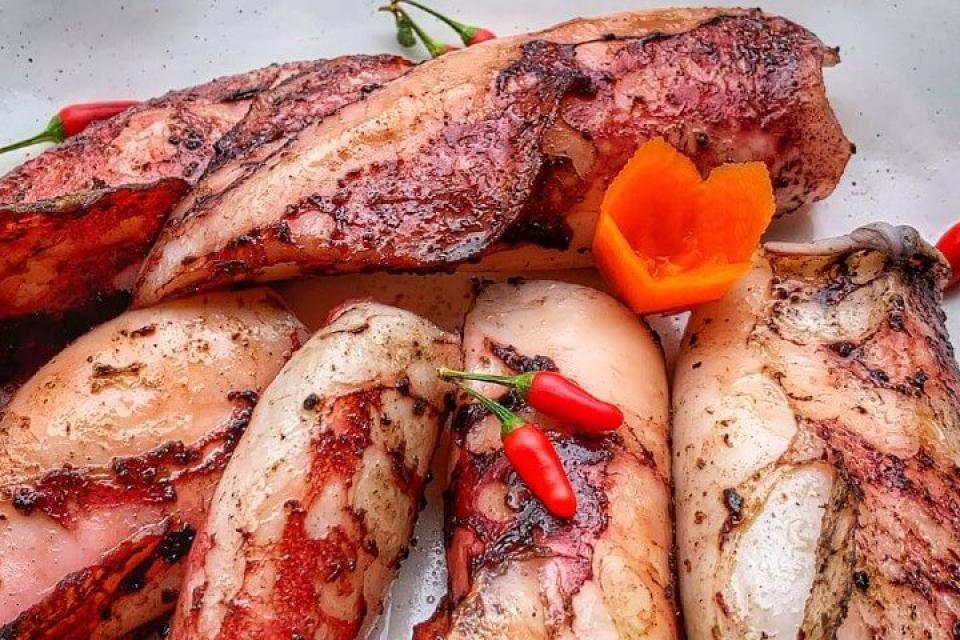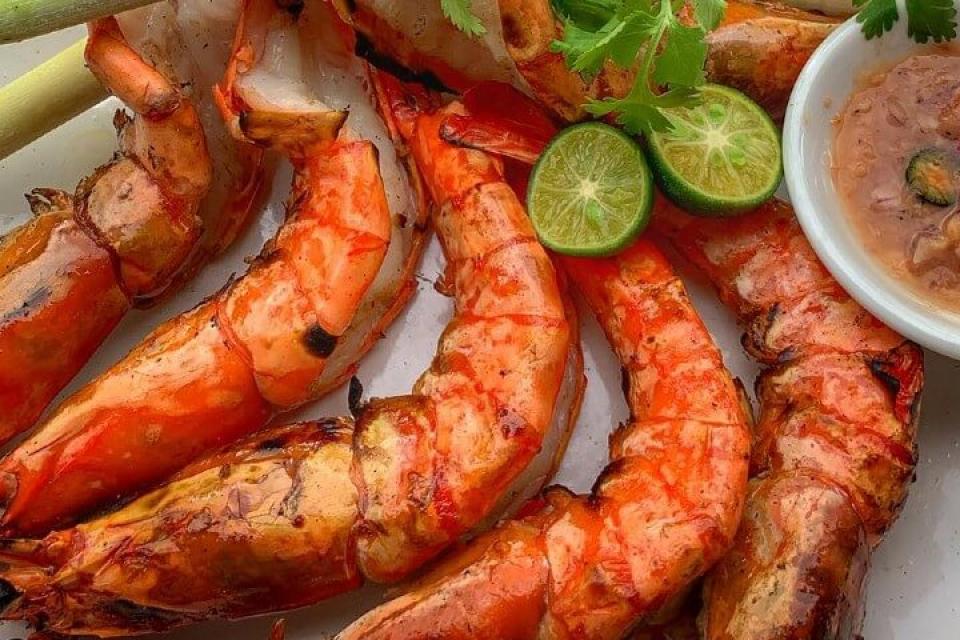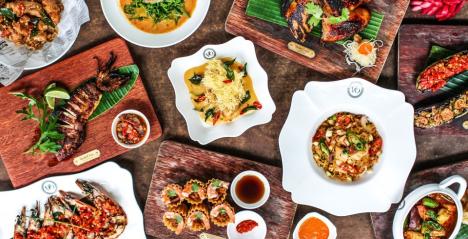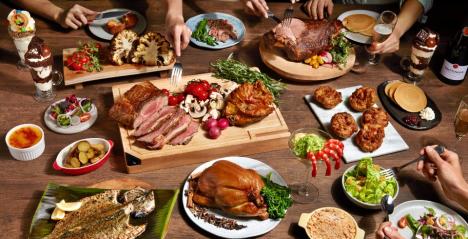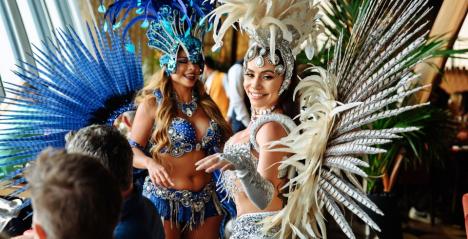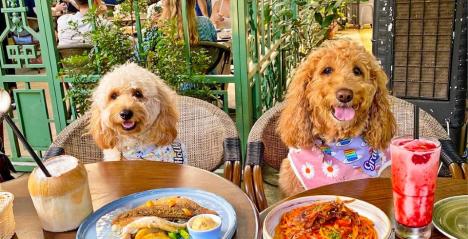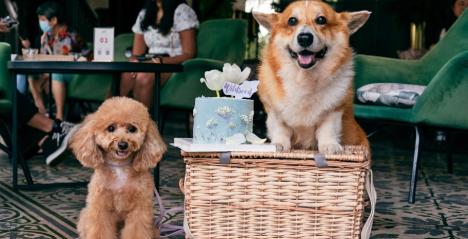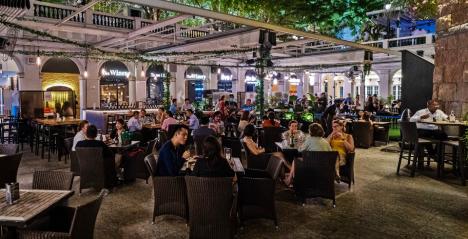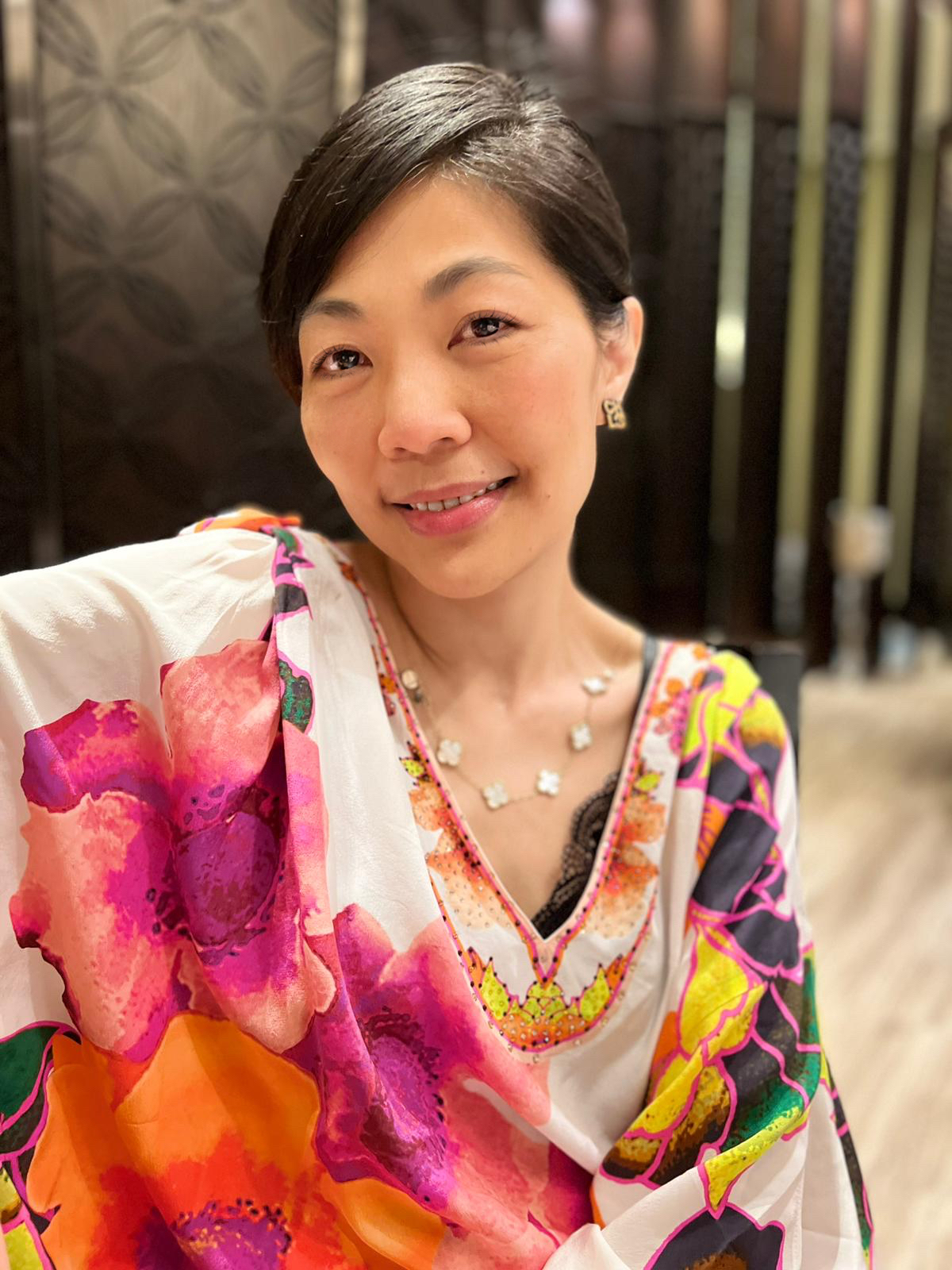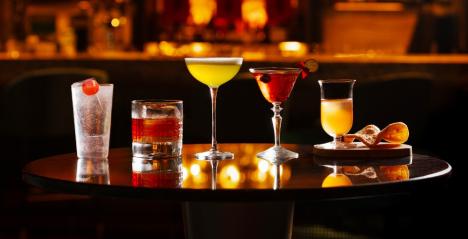The Singapore's Peranakan heritage goes way back to the 15th century when Chinese traders settled down in the Malay archipelago and marry local Malay and Indonesian women. A Straits Chinese community slowly emerged from the children of these mixed marriages, who created a rich cuisine that is the perfect blend of Chinese, Malay and Indonesian flavours.
There are many Peranakan restaurants in Singapore and one of the latest kid on the block is The Real Peranakan.
For starters, we had the favourite Peranakan Ngoh Hiang. Behind the simplicity of this meat roll dish lies a lot of cooking skills and knowledge to achieve a fine balance of texture and flavours for it to be really yummy. The Ngoh Hiang here uses fresh, unsalted beancurd skin stuffed with diced water chestnuts and carrots. A homemade 5-spice powder adds that distinctive taste. The meat roll here was meaty contrasting well against its thin-crisp skin. Certainly a juicy appetiser to whet the appetite for more things to come.
We than had the Hee Peow Soup which is a collagen-rich soup made with hee peow (fish maw). The small urn of goodness contains handmade soft prawn ball, juicy pork ball and bouncy fish ball, made using Chef Philip’s grandmas’ age-old recipe. The soup is also sweet from the addition of Tianjin cabbage.
Another must have that test the skill of any Peranakan restaurant is the Nyonya Chap Chye. This traditional favourite is a medley of Chinese cabbage, fried beancurd, mushrooms, glass noodles (tang hoon) and carrots cooked in fermented soy bean paste (tau cheo). A trivia note, this dish is often used by Peranakan mothers as a barometer to test their son’s girlfriend or wife’s cooking ability. The vegetables I had were nicely simmered until soft without being overly disintegrated, with seafood-sweetness as the ingredients were slowly braised in prawn stock.
We also had Babi Tohay (braised pork belly slow-cooked with fermented shrimp and red yeast rice or Ang Kak). This is a dish that you can hardly find in Peranakan restaurant in Singapore. The dish is made from an old recipe that Chef Philip learned from his cooking mentors, Uncle Tan and Auntie Rosie. The distinctive red color of the dish comes from the Ang Kak. Today red yeast rice is even used in health supplements as a natural strain to help lower cholesterol. The braised till melt-in-the-mouth pork belly goes extremely well with white rice.
Another must-order is the favourite classic Ayam Buah Keluak, which is a true test of the culinary standard of any Peranakan restaurant. This savoury chicken dish is cooked with tamarind gravy and black buah keluak nuts. The slow-cooking process creates rich, robust, earthy flavours, complemented with creamy earthiness and subtle bitter notes from the nut. The nuts are actually prepared and soaked 3 days before used in the dish. It has full-bodied notes, reminding one of truffle, and is the source of the dish’s complex flavour. What is interesting about the Buah Keluak is the inky paste is blended with minced shrimps and specially-created seasonings; after which the Buah Keluak paste is stuffed back into the nut shells. So when you order this dish, savour it and think of the efforts that goes into cooking this dish.
The final dish we had was the Sambal Udang Belimbing. This dish is seasonal because the sourish blimbing fruit can hardly be found in the market and Chef Philip depend on goodwill of friends and relatives who plants this fruit tree and happily pass them to chef to create this dish. When you taste the spicy prawn sambal, you can taste the sour, piquant notes from the fruit.
If you are lucky to see Chef Philip in the shop and thinks that he looks familiar, that’s because he had appeared in many TV programs, magazines and social media. Nicknamed ‘The Peranakan Chef’, he had curated the culinary aspects of the Channel 8 hit TV series “The Little Nyonya” including the recent China multi-million dollar production. This 5th generation Peranakan is also the author of several cook books, including the bestselling “With Love, from The Little Nyonya” and “The Peranakan Kitchen”.
If this had whetted your appetite, make your way down to the restaurant in Hillcrest (Bukit Timah).
INFORMATION

